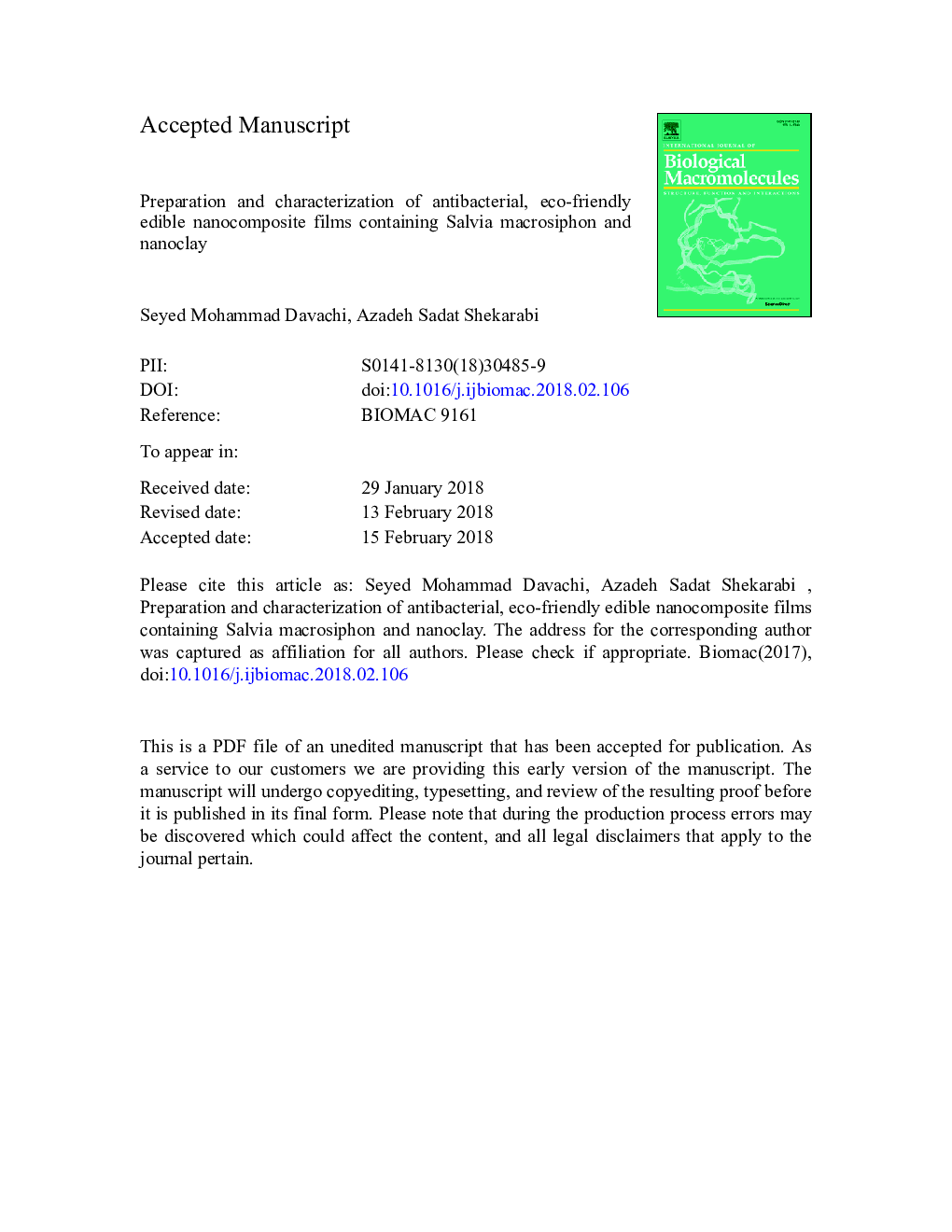| Article ID | Journal | Published Year | Pages | File Type |
|---|---|---|---|---|
| 8327361 | International Journal of Biological Macromolecules | 2018 | 29 Pages |
Abstract
Nowadays, food security is a vital issue and antimicrobial packaging could play an important role in this matter. In this regard, Salvia macrosiphon seed mucilage (SSM) and nanoclay, as new sources for the production of food-grade edible films were investigated. These edible films were prepared by incorporation of SSM with glycerol and different percentage of nanoclay. Upon addition of nanoclay up to 2% physical, mechanical and thermal properties were considerably improved and the composite films showed the lowest water vapor permeability (WVP), as well as highest elongation at break and tensile strength. The nanocomposite edible films also showed antibacterial activity due to the SSM nature. Addition of nanoclay, increased the hydrophobicity, which makes the films great alternatives for food packaging. This study revealed that these novel antimicrobial edible films could be a promising packaging option for a wide range of food products.
Related Topics
Life Sciences
Biochemistry, Genetics and Molecular Biology
Biochemistry
Authors
Seyed Mohammad Davachi, Azadeh Sadat Shekarabi,
